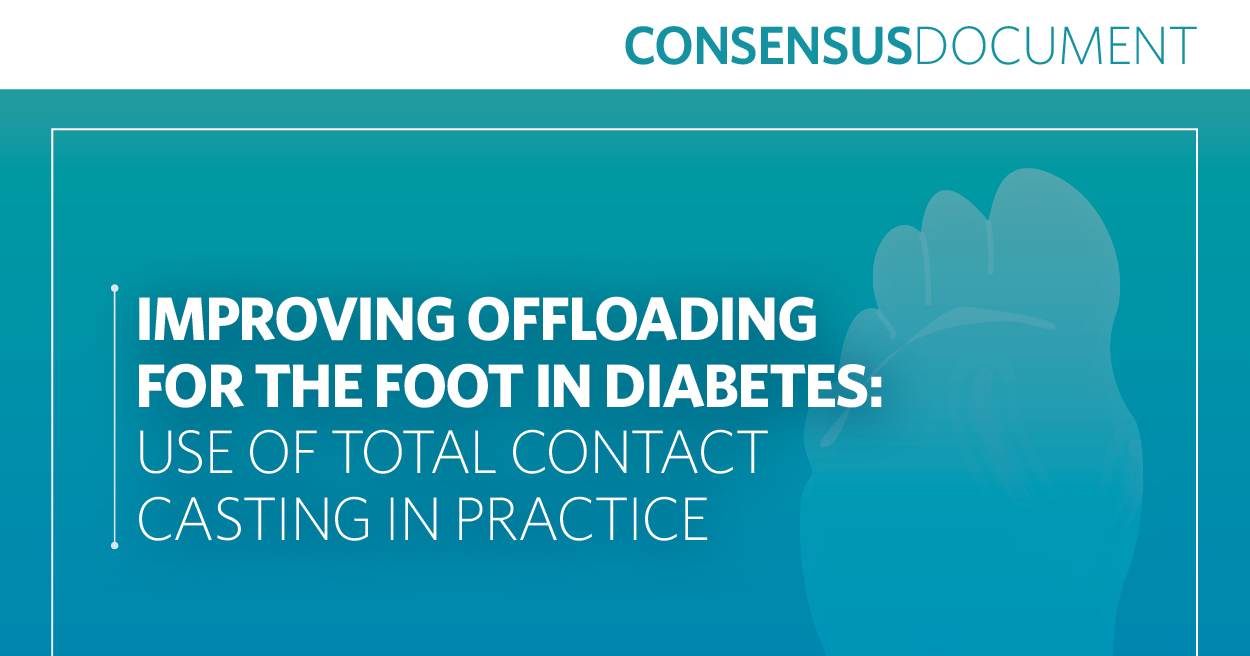Say what you want
It is 18 years since I moved to Scotland. At first I was nervous but in recent years I have come to realise that the NHS in Scotland can do many things better than the rest of the UK because the devolved NHS means that a degree of central control has been maintained. For diabetes this means that national initiatives can be centrally led and promoted resulting in wider adoption and better care for all.
Graham (now Professor) Leese, has been at the lead of diabetic foot policy in Scotland for many years. With the Tayside DARTS-MEMO record linkage, Community Health Index numbers for all, and SCI-DC as the national IT model for diabetes care in Scotland, figures for epidemiological studies are more readily available and more accurate than the rest of the UK and on a par with our Scandic cousins. I have highlighted two of his recent studies in this clinical digest.
The national screening programme for risk of diabetic foot ulceration in Scotland (Leese et al, 2011; summarised below) is being led by Duncan Stang and slowly, but steadily, the number of people having a structured foot assessment and risk score in Scotland is climbing. Risk stratification is more useful than just presence or absence of pulses and vibration, and one of the reasons it is now the Quality and Outcomes Framework standard is the recent Scottish (Graham and Duncan’s) work on this. Interestingly, the number of people with current ulceration (2.2%) and with a history of ulceration (4.9%) is in line with previous estimates for the UK and a much more realistic number to base services on than the 15% often quoted (Ramsey et al, 1999).
The basis for the value of risk assessment remains the ability to predict future foot ulceration. Low risk individuals are, as the label suggests, at low risk of future ulceration. Those with previous ulceration are at the highest risk. This fact remains true in Leese et al’s (2011; summarised alongside) second article. Harkless and Dennis (1987) wrote that “you see what you look for and recognise what you know”. I am in danger seeing what I want in Leese et al but think it further reinforces my belief that primary prevention of ulceration will be difficult to achieve, and even harder to prove, in the wider diabetes population. However, if we are to make the biggest impact on amputations and foot ulceration then it is treating active ulcers effectively and finding a way to stop people re-ulcerating that should be diabetic foot care’s biggest challenge for the second decade of the 21st century.
National diabetic foot care strategy in Scotland
- A national strategy for diabetes foot care across Scotland has been developed by the Scottish Diabetes Foot Action Group (SDFAG).
- The national plan comprises patient information leaflets, professional education material and publication of a consensus document for antibiotic use in the diabetic foot.
- Data collected indicate that 58% of Health Boards have consultants with dedicated foot clinics, and 42% had integrated orthotic involvement.
- SDFAG is working with Foot in Diabetes UK to identify key podiatry skills by developing core competencies and a competency framework for the diabetes podiatrist and diabetes orthotist.
- This national strategy aims to improve the quality of care for people with diabetes foot problems.
Leese GP, Stang D, Pearson DW et al (2011) A national approach to diabetes foot risk stratification and foot care. Scott Med J 56: 151–5
Identifying the “at-risk” foot in clinical practice
- This study was undertaken to identify which individual risk factors were most accurate at predicting foot ulceration, and whether an integrated system, rather than individual criteria, is a better screening tool.
- Data regarding foot and general diabetes indicators were recorded on the regional diabetes electronic register. Follow-up data on foot ulceration were taken from the same register, along with multidisciplinary foot clinic, community and podiatry paper records. Data were linked to assess which risk factors best predicted future foot ulceration.
- A total of 3719 people (44% female; mean age, 59±15 years) had foot risk scores recorded: 851 (22.9%) were insensitive to monofilaments; 629 (17.2%) had both pulses absent; 184 (4.9%) had a previous ulcer.
- Using multivariate analysis, the strongest predictors of foot ulceration were: previous ulcer, insulin treatment, insensitivity to monofilaments, structural abnormality, proteinuria and retinopathy.
- The sensitivity (and specificity) of predicting foot ulceration was 52% (99%) for previous ulcer, 61% (81%) for insensitivity to monofilaments, 75% (89%) for “high-risk” on an integrated score, and 91% (61%) for a combination of high and moderate risk.
- It was concluded that integrated foot risk scores are more sensitive than individual criteria in predicting foot ulceration and are likely to be better screening tools.
Leese GP, Cochrane L, Mackie AD et al (2011) Measuring the accuracy of different ways to identify the ‘at-risk’ foot in routine clinical practice. Diabet Med 28: 747–54
Prevalence of PDN in a UK population
- The aim of this observational study was to assess the: (i) prevalence of painful diabetic neuropathy (PDN) symptoms; (ii) relationship between symptoms and clinical severity of neuropathy; and (iii) role of diabetes type, sex and ethnicity in PDN.
- Data from a large cohort of people with diabetes receiving community-based health care in northwest England (n=15 692) were analysed. PDN was assessed using the neuropathy disability score (NDS) and neuropathy symptom score (NSS).
- Prevalence of painful symptoms (NSS ≥5) was 34%, and prevalence of PDN (NSS ≥5; NDS ≥3) was 21%. Painful symptoms were recorded in 26% of people without neuropathy (NDS ≤2) and 60% of those with severe neuropathy (NDS >8).
- The adjusted risk of painful symptoms in T2D was double that in T1D (odds ratio [OR], 2.1; 95% confidence interval, 1.7–2.4; P<0.001); this was not affected by the severity of neuropathy, foot deformities, insulin use, alcohol or smoking.
- Women had a 50% higher adjusted risk of painful symptoms than men (OR, 1.5 [1.4–1.6]; P<0.0001).
- Neuropathy was less prevalent in south Asian people than in European and African-Caribbean people (14 vs 22 vs 21%, respectively); however, a higher prevalence of painful symptoms was observed in south Asian people (38 vs 34 vs 32%, respectively; P<0.0001).
- The authors concluded that one-third of all community-based people with diabetes had PDN symptoms, and that PDN was more prevalent in people with T2D, women and people of south Asian origin.
Abbott CA, Malik RA, van Ross ER et al (2011) Prevalence and characteristics of painful diabetic neuropathy in a large community-based diabetic population in the UK. Diabetes Care 34: 2220–4
Growth factors and skin substitutes for managing DFUs
- This Health Technology Assessment was undertaken to assess the use of growth factors alone or in combination with other therapies in managing non-infected diabetic foot ulcers (DFUs).
- A systematic search of relevant databases was performed.
- The 25 studies identified compared becaplermin, recombinant human epidermal growth factor (rhEGF), basic fibroblast growth factor, and the active skin grafts Dermagraft® (Smith & Nephew, Hull) and Apligraf® (Novartis, Camberley), with standard wound care alone or extracellular matrix.
- A higher incidence of complete wound closure was observed with becaplermin, rhEGF, Dermagraft® and Apligraf®, and in a shorter time period.
- It was concluded that add-on therapy with growth factors and active skin substitutes for treating non-infected DFUs could be an alternative to standard wound care alone.
Buchberger B, Follmann M, Freyer D et al (2011) The evidence for the use of growth factors and active skin substitutes for the treatment of non-infected diabetic foot ulcers (DFU): a health technology assessment (HTA). Exp Clin Endocrinol Diabetes 119: 472–9
Developing and validating a risk score for amputation
- The authors sought to develop and validate a risk score to identify people hospitalised for diabetic foot infection at highest risk of lower extremity amputation (LEA).
- A large clinical database was used to identify 3018 people hospitalised at 97 USA hospitals between 2003 and 2007, 21.4% of whom underwent LEA.
- Risk factors most highly associated with LEA were: surgical site infection, previous LEA, vasculopathy, and white blood cell count >11 000/mm3 (P<0.0001).
- The risk score stratified people into five groups, which showed a graded relation to LEA risk (P<0.0001).
- The authors concluded that this risk score appears to accurately stratify the risk of LEA in people hospitalised for diabetic foot infection.
Lipsky BA, Weigelt JA, Sun X et al (2011) Developing and validating a risk score for lower-extremity amputation in patients hospitalized for a diabetic foot infection. Diabetes Care 34: 1695–700
Importance of limb preservation in people with diabetes
- This retrospective study aimed to determine outcomes in people with diabetes undergoing proximal forefoot/midfoot (PF/M) amputations.
- Records extracted from a limb-salvage database were split into two groups: 88 people (92 limbs) in the PF/M amputation group (Group 1) ; 25 people in the below-knee amputation group (Group 2).
- At 2 years in Group 1, 80% were still alive, 73% of limbs remained intact and 64% were ambulatory; in Group 2, 52% had died and 64% of survivors were ambulating with a prosthetic limb.
- It was concluded that aggressive efforts at limb salvage with PF/M amputation procedures should be considered prior to higher level amputation.
Evans KK, Attinger CE, Al-Attar A et al (2011) The importance of limb preservation in the diabetic population. J Diabetes Complications 25: 227–31





